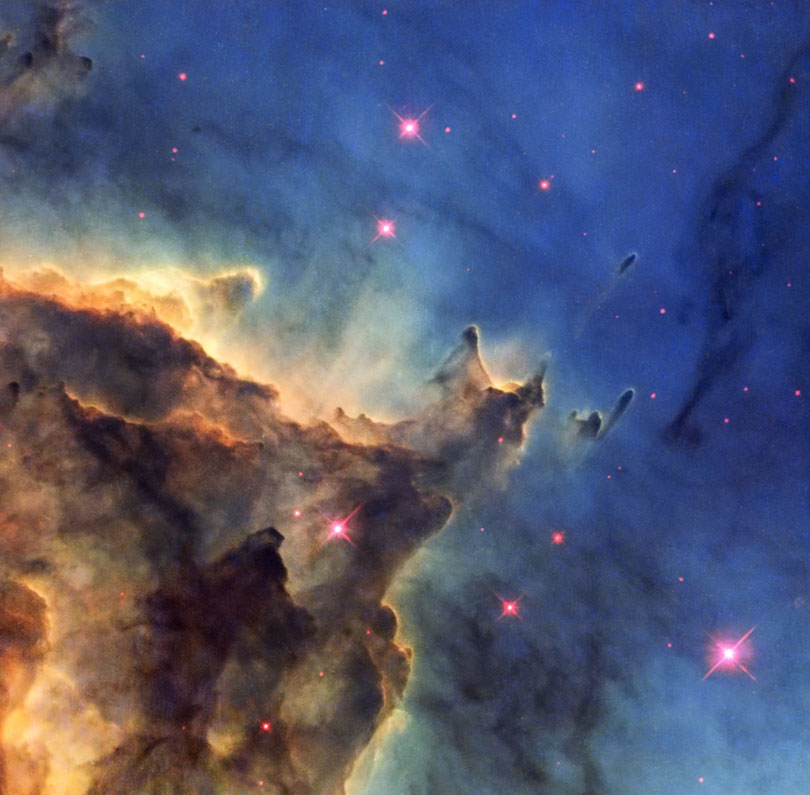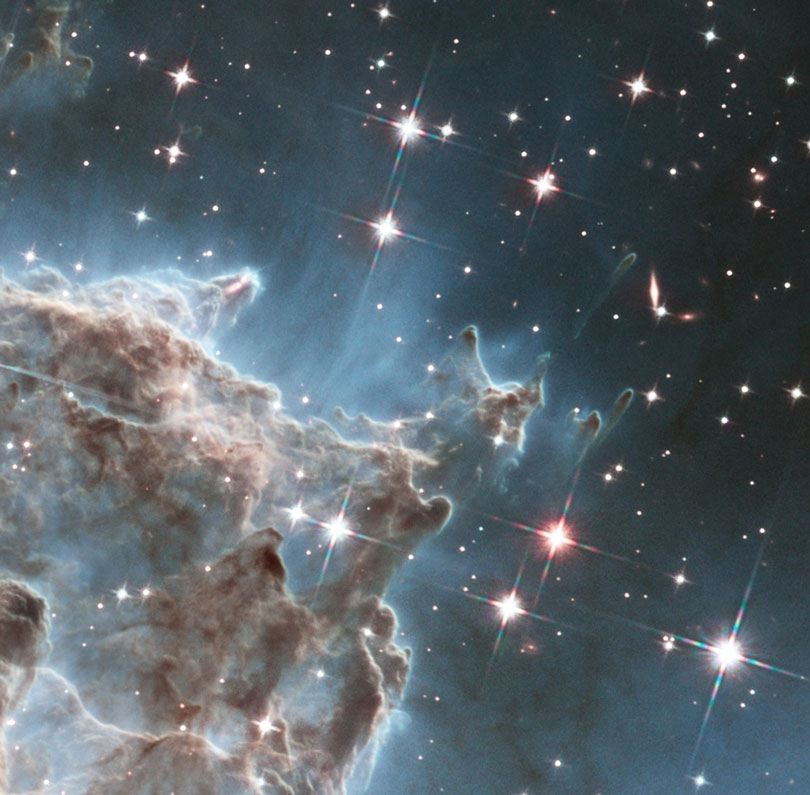- GALAXIES
- INFRARED WORLD
- INTERACTING GALAXIES
- MILKY WAY
- STAR BIRTH
- STAR DEATH
- GALAXIES
- INFRARED WORLD
- INTERACTING GALAXIES
- MILKY WAY
- STAR BIRTH
- STAR DEATH
Star Birth
The Monkey Head Nebula (NGC 2174)


Visible:
Default View
Infrared:
LESS
MORE
The Monkey Head Nebula (NGC 2174)
The Monkey Head Nebula, NGC 2174, was observed by Hubble using both visible and infrared light, revealing both the surface and the depths of this multifaceted pillar of gas and dust.
Visible:
The gas and dust forming stars obscures the background light, a temporary fog collapsing to make stars hidden within.
Infrared:
This view peels back the gas and dust to reveal stars forming within the nebula and in the background. In addition, entire distant galaxies — their spiral or irregular shapes easy to distinguish from the starry background — pop into view far in the distance behind the nebula as the gas becomes transparent in the infrared. A handful of young stars deep inside the cloud also become unobscured enough to see.
CREDITS:
Visible: NASA, ESA, and the Hubble Heritage Team (STScI/AURA), and J. Hester. Infrared: NASA, ESA, and the Hubble Heritage Team (STScI/AURA), and J. Hester. Web page design credit M. Merin (Pludo) and B. Merin.